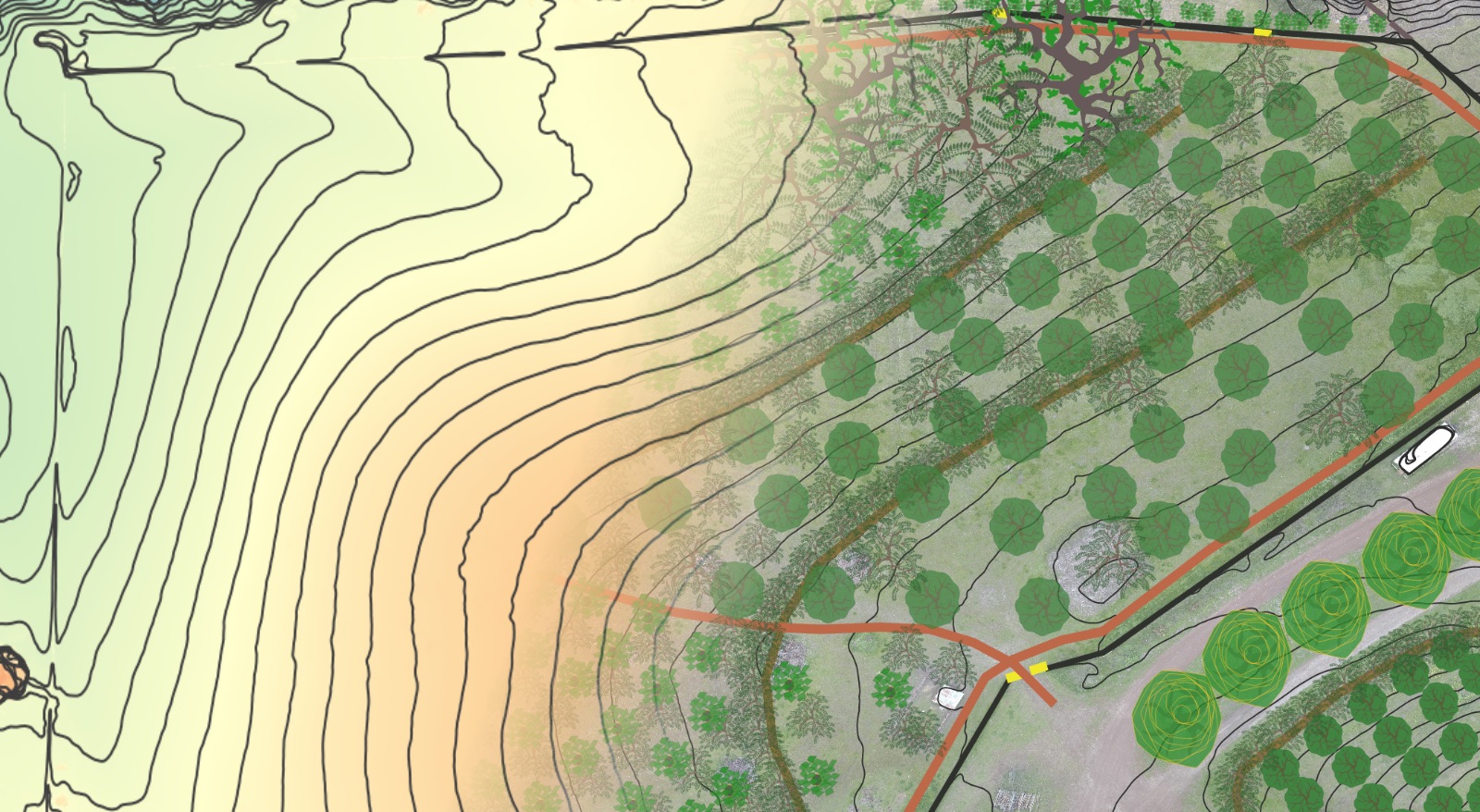Your cart is currently empty!

Double K Ranch
Earthworks For Agroforestry
~ Design & Implementation ~
Design
Location: Pismo, CA
Land & Climate Characteristics: 10 acre homestead property located in Pismo on California’s central coast. Significant maritime influence. Long, hot, dry summers, followed by cool and winters. Property had ~ 5 acres of flat bottom land formerly in pasture as animal paddocks, and ~5 acres of progressively steeper land moving up into a small valley bowl. Soils are sticky, expansive clay. Predominant ecotone is anchored by coast live oaks.
Client Vision And Goals: The clients are working to establish a regenerative, multi-family homestead, complete with perennial food production systems, long-term timber plantings, livestock and a market garden. Excess produce is to be sold and distributed through the owner’s local yoga studio.


The earthworks design for Double K Ranch was implemented during a 5 day earthworks course led by Warren Brush of Resilience Design Consultants and co-facilitated by Jesse Smith of White Buffalo Land Trust, Brenton Kelly of Quail Springs Permaculture and myself. The following elements were installed to create a top-to-bottom passive water harvesting infrastructure to solve the annual flooding issue (including fixing it for the neighboring farm) and increase the amount of water infiltration on an annual basis.
Design Elements
- Water
- Passive water harvesting earthworks including:
- Rolling dip drain connecting up-valley 19 acre catchment with the formerly isolated stock pond via a 1.5% grade earthen drain.
- Pond-remodeling to increase storage capacity by 100% and re-set freeboard to a safe height.
- Installation of a pond spillway to link the pond to the lower water harvesting structures.
- A network of branched detention swales designed to bank water during high-flow events as it passed through the center of the lower fields, holding onto it and allowing it to infiltrate.
- Sediment deposition basin at the run-on point from the neighboring agricultural fields – accessible by tractor during the dry months to harvest sediment and use it throughout the property.
- Level-sill exit designed to maximize system storage while eliminating flooding to the shared driveway.
- Passive water harvesting earthworks including:
- Access
- Four-seasons vehicle access to the lower fields.
- Elevated livestock pen area.
- Living Systems
- Silvopasture paddocks between the detention swales.

Implementation Gallery




























